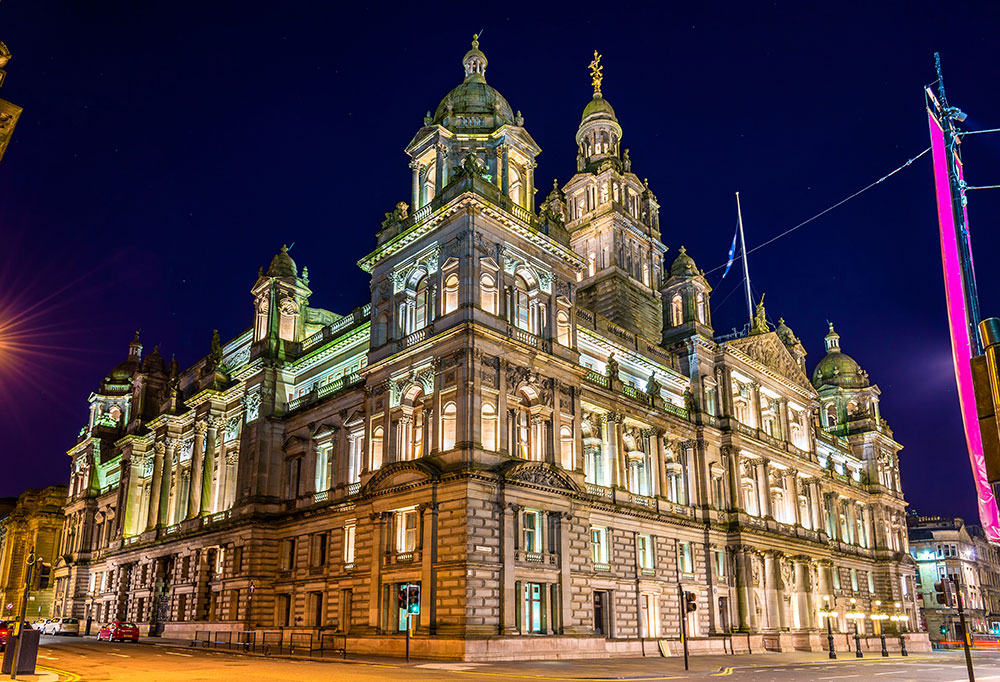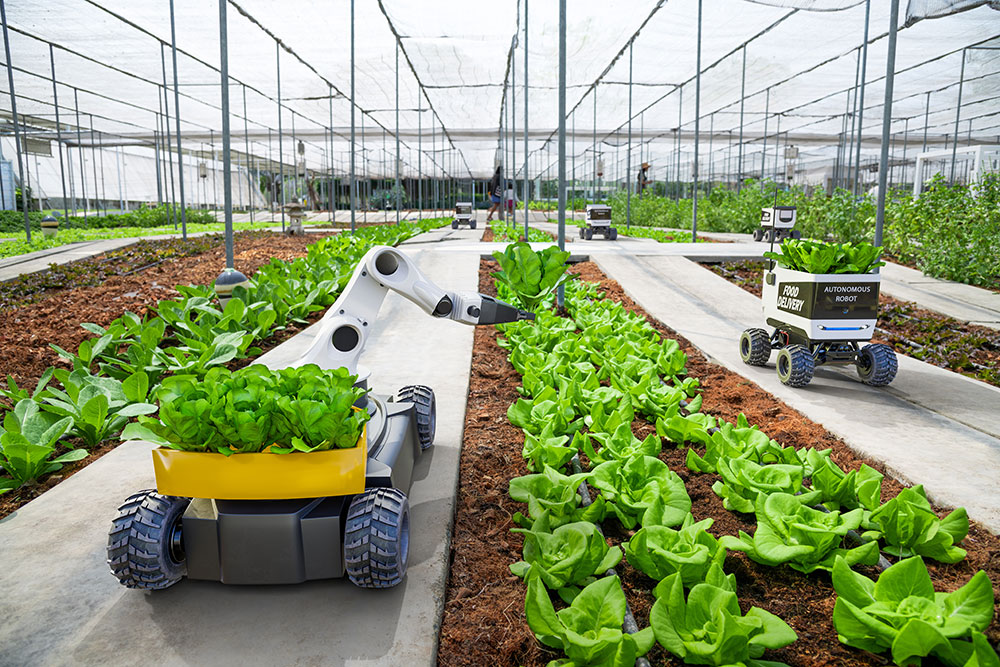The Regenerative Enterprise: A New Sustainable Enterprise
Fujitsu / September 2, 2024
We are transforming Earth into Mars, then convincing people to go and live there. The only possible alternatives for the human being are extinction, barbarism, or regeneration. This is one of the messages that Christian Sarkar, Co-founder of the Regenerative Marketing Institute, delivered at the event. Fujitsu met Sarkar during the Global Peter Drucker Forum and discovered that his concept of regeneration resonates with ours. Indeed, his book, “Regeneration: The Future of Community in a Permacrisis World,” inspired our technology vision for the future. I was eager to learn more from him and other thought leaders at Common Home about our future and how regenerative enterprises can contribute to the health of our planet.
This article summarizes the key insights from the event, offering enterprise leaders more options for building a regenerative enterprise: a company that thrives economically, considers the planet and its people major stakeholders, and leverages technology for innovation.
Contents
- Beyond sustainability: embracing regeneration
- The urgency of regeneration: a call to action
- Regeneration: a collaborative journey
- Defining regeneration: an act of art, beauty, and love
- Addressing the challenges: sustainability and social impact
- Examples of regenerative enterprises: leading the way
- The role of technology in creating a regenerative enterprise
- Fujitsu Technology and Service Vision: defining regenerative enterprise
- The next step: creating a regenerative enterprise
Beyond sustainability: embracing regeneration
Many leaders see sustainability as a business opportunity but struggle to integrate it strategically. This is the motivation to look for innovative methodologies. The concept of regeneration goes beyond sustainability. It is a modern approach that aims to create a positive, lasting impact on our planet, people, and economy. It is about creating a future where businesses thrive not at the expense of the environment and people but in harmony with them.

Regenerative enterprise: businesses thrive with the environment and people
The urgency of regeneration: a call to action
The event alerted people of the urgency of regeneration. Enrico Foglia, Co-founder of the Regenerative Marketing Institute, states: "To solve complex problems, the answer cannot come from one person alone. We have only one world. There is no plan B." Christian Sarkar adds that technical solutions to save our world exist today. But the current economy works well for business owners and politicians, and they resist change.
Regeneration: a collaborative journey
Regeneration is a collaborative journey that requires a shared commitment to creating a better future. This journey is already underway, with events like Common Home 2024, which is one of the events hosted by Christian Iaione, Professor of Law and Policy of Innovation at the University of Business Luiss, and Philip Kotler, Professor of International Marketing Institute. Such events provide a place for thought leaders to share their insights and inspire action.

Common Home: thought leaders share their ideas about regeneration
Defining regeneration: an act of art, beauty, and love
Lorenzo Echeoni, Executive Director of Assoholding, sees regeneration through the lens of love. We live in a technological era, and we often forget that the great accomplishments of human beings are driven by love. Luca Virdia, Founder of Bloom, reinforces this concept, emphasizing the importance of emotional intelligence alongside technical skills.
Professor Guido Palazzo of the University of Lausanne uses the story of the Lion-Man, the oldest known artifact, to illustrate regeneration. This 40.000-year-old statue, crafted during the glacial period, represents the human desire to leave something beyond ourselves. It reminds us that we live for great ideas, art, beauty, and love.

Regeneration as an act of art, beauty, and love
Addressing the challenges: sustainability and social impact
Another critical aspect of the current challenges is the social impact of our actions. Kenneth Amaeshi, Director Chair in Business and Sustainable Development at the University of Edinburgh, highlights the need to address the "Social" aspect of ESG (Environmental, Social, and Governance), particularly in Africa. His program, One Kindred, One Business, empowers local communities to create and sustain their businesses rather than relying on external help.
Silvana Perretta, Professor of Surgery at the University of Strasbourg, focuses on the social impact of healthcare. The lack of access to essential healthcare services globally is a major challenge that requires innovative solutions. She reminds us that we must purchase the ticket for the future today.
Examples of regenerative enterprises: leading the way
Second Chance, an organization founded by Flavia Filippi, is a prime example. They connect companies with people coming out of jail, offering them employment opportunities and a second chance at a fulfilling life. Filippi encourages companies to start with temporary contracts, allowing them to assess the skills and motivation of their new employees.
“A good company offers excellent products and services. A great company also offers excellent products and services but also strives to make the world a better place.” Philip Kotler
Alessia Canfarini, Head of Human Capital at BIP, has helped companies reorganize and adapt their business models without layoffs. This demonstrates that we can regenerate through a human-centered approach that prioritizes the well-being of employees.
Regeneration can also emerge from the ecosystem, as demonstrated by Maurizio Veloccia, Urban Planning Councilor of Rome. He leads the project to transform an abandoned mental health hospital into a hub for startups, fostering collaboration and innovation in a space that once symbolized alienation and suffering. This project highlights the power of repurposing existing infrastructure to create positive social and economic impact.

Historical buildings create a positive economic and social impact
The role of technology in creating a regenerative enterprise
Technology is not the problem, but rather a powerful tool that can drive regeneration. The Luiss Guido Carli Business School empowers students to propose innovative ideas and develop them in its labs. Many of these ideas revolve around energy savings in cities, farms, mobility, and waste.
In such environments, entrepreneurs can design technology responsibly, with a focus on ethics and social impact. This is the required shift from a profit-driven approach to one that prioritizes the well-being of all stakeholders, including the environment and future generations.

Technology drives regenerative enterprise
Fujitsu Technology and Service Vision: defining regenerative enterprise
We believe in the main messages expressed by the thought leaders at Common Home. They are part of our research, analysis, and vision to create the Fujitsu Technology and Service Vision (FT&SV).
The world is at a turning point. Rapid technological advancements, particularly in artificial intelligence (AI), are transforming industries and our lives faster than ever before. Yet this progress comes with a stark reality: the urgent need for sustainability. Our planet is facing environmental challenges, and the impact of our actions is becoming increasingly evident. Innovative leaders create a new option: the regenerative enterprise.
“We believe that the keyword for our time is Regeneration. We need to regenerate the global environment and ensure that everyone can enjoy a healthy and fulfilling life.” Hiroshi Nishikawa
The Fujitsu Technology and Service Vision foresees a future where technology empowers us to create a more sustainable world. FT&SV recognizes the pressing need for organizations to embrace regeneration as a core business principle.
Our research with 800 C-level executives revealed their concern: while technology brings improvements, it does not always translate to increased revenue. For example, electricity consumption by AI in three years will increase 10 times, bringing higher costs for enterprises. In this context, a few leaders shift their mindset, moving beyond short-term gains to embrace a long-term vision that benefits all stakeholders. This is the foundation of the regenerative enterprise.
The next step: creating a regenerative enterprise
I had the pleasure of meeting the authors of the book “Regeneration” in person and getting my copy signed with dedication. This is another step in our common journey, and I believe we will work on further opportunities together.
This article provides a glimpse into the concept of regeneration, its importance for businesses, and how to become a regenerative enterprise. It emphasizes that this is a collaborative journey, requiring an ecosystem that shares values for our planet and people.
To learn more about the challenges faced by top managers and how to transform a company into a regenerative enterprise that considers planet, people, and prosperity, explore the research and findings at Fujitsu Technology and Service Vision. It is up to us to create a world that is sustainable and prosperous for all.

Editor's Picks











